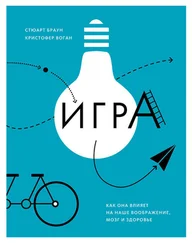Guéguen, N., Meineri, S., and Fischer-Lokou, J. (2013), ‘Men’s music ability and attractiveness to women in a real-life courtship context’, Psychology of Music, published online 1 May 2013.
North, A.C., Tarrant, M., and Hargreaves, D.J. (2004), ‘The effects of music on helping behaviour: a field study’, Environment and Behaviour, 36 (2), 266–275.
Lamy, L., Fischer-Lokou, J., and Guéguen, N. (2009), ‘Induced reminiscence of love and chivalrous helping’, Current Psychology, 28 (3), 202–209.
LeDoux, J.E. (2000), ‘Emotion circuits in the brain’, Annual Review of Neuroscience, 23, 155–184.
Koelsch, S., et al. (2006), ‘Investigating emotion with music: an fMRI study’, Human Brain Mapping, 27 (3), 239–250. Blood, A.J., and Zatorre, R.J. (2001), ‘Intensely pleasurable responses to music correlate with activity in brain regions implicated in reward and emotion’, Proceedings of the National Academy of Sciences, 98 (2), 11818–11823.
Griffiths, T.D., Warren, J.D., Dean, J.L., and Howard, D. (2004), ‘“When the feeling’s gone”: a selective loss of musical emotion’, Journal of Neurology, Neurosurgery & Psychiatry, 75, 344–345.
Gosselin, N., et al. (2005), ‘Impaired recognition of scary music following unilateral temporal lobe excision’, Brain, 128 (3), 628–640.
Eldar, E., et al. (2007), ‘Feeling the real world: limbic response to music depends on related content’, Cerebral Cortex, 17 (12), 2828–2840.
Boltz, M.G. (2001), ‘Musical soundtracks as a schematic influence on the cognitive processing of filmed events’, Music Perception, 18:427–454.
Phan, K.L., Wager, T.D., Taylor, S.F., and Liberzon, I. (2002), ‘Functional neuroanatomy of emotion: a meta-analysis of emotion activation studies in PET and fMRI’, Neuroimage, 16 (2), 331–348.
Cohen, A.J. (2001), ‘Music as a source of emotion in film’, in Juslin, P.N., Sloboda, J.A. (eds.), Music and emotion. New York: Oxford University Press, pp. 249–272.
Austin, A., Moore, E., Chordia, P., and Gupta, U. (2010), ‘Characterization of Movie Genre Based on Music Score’, in Proceedings of the 35th IEEE Conference of Acoustics, Speech, and Signal Processing, 421–424.
Baumgartner, T., Lutz, K., Schmidt, C.F., and Jäncke, L. (2006), ‘The emotional power of music: how music enhances the feeling of affective pictures’, Brain Research, 23, 1075 (1), 151–164.
Huron, D. (2011), ‘Why is sad music pleasurable? A possible role for prolactin’, Musicae Scientiae, 15 (2), 146–158.
Koelsch, S. (2012), Brain and music. Wiley.
http://filmsound.org/gustavo/leitmotif-revisted.htm.
Hargreaves, D.J., and North, A.C. (2008), The Social and Applied Psychology of Music. Oxford: Oxford University Press.
The British Association of Sport and Exercise Sciences statement on the use of music in exercise: http://www.bases.org.uk/write/Documents/SES_EXPERT_3.pdf.
Crust, L., and Clough, P.J. (2006), ‘The influence of rhythm and personality in the endurance response to motivational asynchronous music’, Journal of Sports Sciences, 24 (2), 187–195.
Karageorghis, C.I., Terry, P.C., and Lane, A.M. (1999), ‘Development and initial validation of an instrument to assess the motivational qualities of music in exercise and sport: The Brunei Music Rating Inventory’, Journal of Sports Sciences, 17 (9), 713–724.
Karageorghis, C.I., and Priest, D.L. (2012), ‘Music in the exercise domain: A review and synthesis (Part I)’, International Review of Sport and Exercise Psychology, 5 (1): 44–66.
Hall, K.G., and Erickson, B. H. (1995), ‘The effects of preparatory arousal on sixty-meter dash performance’, The Applied Research in Coaching and Athletics Annual, 10, 70–79.
Priest, D.L., and Karageorghis, C.I. (2008), ‘A qualitative investigation into the characteristics and effects of music accompanying exercise’, European Physical Education Review, 14 (3), 347–366.
Karageorghis, C.I., et al. (2009), ‘Psychophysical and ergogenic effects of synchronous music during treadmill walking’, Journal of Sport & Exercise Psychology, 31 (1), 18–36.
Karageorghis, C.I., and Priest, D.L. (2012), ‘Music in the exercise domain: a review and synthesis (Part I)’, International Review of Sport and Exercise Psychology, 5 (1), 44–66.
van der Vlist, B., Bartneck, C., and Mäueler, S. (2011), ‘moBeat: Using interactive music to guide and motivate users during aerobic exercising’, Applied Psychophysiology and Biofeedback, 36 (2), 135–145.
Karageorghis, C.I., and Priest, D.L. (2012), ‘Music in the exercise domain: A review and synthesis (Part II)’, International Review of Sport and Exercise Psychology, 5 (1), 67–84.
Dyrlund, A.K., and Wininger, S.R. (2008), ‘The effects of music preference and exercise intensity on psychological variables’, Journal of Music Therapy, 45 (2), 114–134.
Karageorghis, C.I., and Priest, D.L. (2012), ‘Music in the exercise domain: a review and synthesis (Part I)’, International Review of Sport and Exercise Psychology, 5 (1), 44–66.
The British Association of Sport and Exercise Sciences statement on the use of music in exercise: http://www.bases.org.uk/write/Documents/SES_EXPERT_3.pdf.
Karageorghis, C., Jones, L., and Stuart, D.P. (2008), ‘Psychological effects of music tempi during exercise’, International Journal of Sports Medicine, 29 (7), 613–619.
Crust, L., and Clough, P.J. (2006), ‘The influence of rhythm and personality in the endurance response to motivational asynchronous music’, Journal of Sports Sciences, 24 (2), 187–195.
Karageorghis, C.I., et al. (2011), ‘Ergogenic and psychological effects of synchronous music during circuit-type exercise’, Psychology of Sport and Exercise, 11 (6), 551–559.
http://www.theguardian.com/lifeandstyle/the-running-blog/2013/may/10/haile-gebrselassie-interview.
http://www.theaustralian.com.au/arts/music/music-the-fuel-for-performance-overdrive-by-olympic-athletes/story-fn9d2mxu-1226424849410.
Gluch, P.D. (1993), ‘The use of music in preparing for sport performance’, Contemporary Thought, 2, 33–53.
Jarraya, M., et al. (2012), ‘The effects of music on high-intensity short-term exercise in well trained athletes’, Asian Journal of Sports Medicine, 3 (4), 233–238.
Читать дальше
Конец ознакомительного отрывка
Купить книгу


![Виктория Токарева - Тихая музыка за стеной [сборник]](/books/34306/viktoriya-tokareva-tihaya-muzyka-za-stenoj-sbornik-thumb.webp)



![Аре Бреан - Музыка и мозг [Как музыка влияет на эмоции, здоровье и интеллект]](/books/398841/are-brean-muzyka-i-mozg-kak-muzyka-vliyaet-na-emoc-thumb.webp)





